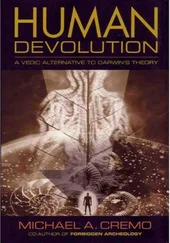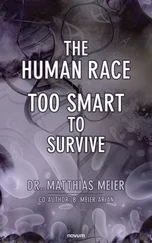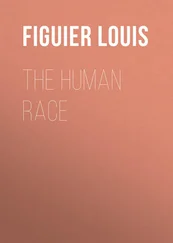Michael Cremo - Forbidden Archeology - The Hidden History of the Human Race
Здесь есть возможность читать онлайн «Michael Cremo - Forbidden Archeology - The Hidden History of the Human Race» весь текст электронной книги совершенно бесплатно (целиком полную версию без сокращений). В некоторых случаях можно слушать аудио, скачать через торрент в формате fb2 и присутствует краткое содержание. Год выпуска: 1992, ISBN: 1992, Издательство: Torchlight Publishing, Жанр: Старинная литература, на английском языке. Описание произведения, (предисловие) а так же отзывы посетителей доступны на портале библиотеки ЛибКат.
- Название:Forbidden Archeology: The Hidden History of the Human Race
- Автор:
- Издательство:Torchlight Publishing
- Жанр:
- Год:1992
- ISBN:9780892132942
- Рейтинг книги:4 / 5. Голосов: 1
-
Избранное:Добавить в избранное
- Отзывы:
-
Ваша оценка:
- 80
- 1
- 2
- 3
- 4
- 5
Forbidden Archeology: The Hidden History of the Human Race: краткое содержание, описание и аннотация
Предлагаем к чтению аннотацию, описание, краткое содержание или предисловие (зависит от того, что написал сам автор книги «Forbidden Archeology: The Hidden History of the Human Race»). Если вы не нашли необходимую информацию о книге — напишите в комментариях, мы постараемся отыскать её.
Forbidden Archeology: The Hidden History of the Human Race — читать онлайн бесплатно полную книгу (весь текст) целиком
Ниже представлен текст книги, разбитый по страницам. Система сохранения места последней прочитанной страницы, позволяет с удобством читать онлайн бесплатно книгу «Forbidden Archeology: The Hidden History of the Human Race», без необходимости каждый раз заново искать на чём Вы остановились. Поставьте закладку, и сможете в любой момент перейти на страницу, на которой закончили чтение.
Интервал:
Закладка:
The Neanderthal discovery was then no longer a topic for discussion only among the members of the Natural History Society of the Prussian Rhineland and Westphalia. The heavyweights of European science moved in to pass judgement. Charles Lyell, then recognized as the world’s preeminent geologist, came to Germany and personally investigated both the fossils and the cave in which they had been found. He felt nothing conclusive could be deduced from the Neanderthal skeleton. For one thing it was “too isolated and exceptional” (Lyell 1863, p. 375). How could generalizations about human prehistory be drawn from just one set of bones which happened to have some “abnormal and ape-like” features? Lyell also felt that its age was “too uncertain.” The unstratified cave deposits in which it had been found could not be assigned a place in the sequence of geological periods. Accompanying animal fossils might have helped establish the age of the Neanderthal man, but none had been found.
Many scientists, especially those opposed to evolutionary doctrines, thought the skeleton was that of a pathologically deformed individual of the recent era. The German anatomist Rudolf Virchow, for example, believed the crude features of the Neanderthal specimen could be explained by deformities resulting from rickets and arthritis. Thirty years after first expressing this opinion in 1857, Virchow still held it, and also continued to dismiss the idea that the Neanderthal bones represented a stage in human evolution from lower species. “The idea that men arose from animals,” said Virchow, “is entirely unacceptable in my view, for if such transitional men had lived there would be evidence of it, and such evidence does not exist. The creature preliminary to man has just not been found” (Wendt 1972, pp. 57–58).
A British scientist argued that the “skull belonged to some poor idiotic hermit whose remains were found in the cave where he died” (Goodman 1982, p. 75). Dr. F. Mayer, an anatomist at Bonn University suggested, like Virchow, that the Neanderthal man’s bent leg bones had been caused by childhood rickets, or perhaps many years of horse riding. In 1814, Cossack cavalry had moved through the area in pursuit of napoleon’s army. Was the Neanderthal man a wounded Cossack who had crawled into the cave and died? Mayer saw this as a distinct possibility. But Thomas Huxley, writing in Natural History Review (1864), asked how a dying soldier got in a cave 60 feet up a steep valley wall and buried himself. And where was his uniform?
An old skull dug up at Forbe’s Quarry, during the building of fortifications at Gibraltar in 1848, entered the discussion. on investigation, the fossil skull had turned out to be quite similar to the Feldhofer cave specimen, prompting George Busk, professor of anatomy at the Royal college of surgeons, to write in 1863: “the Gibraltar skull adds immensely to the scientific value of the Neanderthal specimen, showing that the latter does not represent . . . a mere individual peculiarity, but that it may have been characteristic of a race extending from the Rhine to the Pillars of Hercules. . . . Even Professor Mayer will hardly suppose a rickety Cossack engaged in the campaign of 1814 had crept into a sealed fissure in the Rock of Gibraltar” (Goodman 1982, p. 77).
In 1865, Hugh Falconer said the Gibraltar skull represented “a very low type of humanity—very low and savage, and of extreme antiquity—but still a man and not halfway between a man and a monkey and certainly not the missing link” (Millar 1972, p. 62). In similar fashion, Huxley concluded, after examining the detailed drawings of the Neanderthal skull sent to him by Lyell, that the Neanderthals were not the missing link sought by scientists. Despite the skull’s somewhat primitive features and its apparent great age, it was in Huxley’s opinion quite close to the modern type, close enough to be classified as simply a variation. “In no sense,” he said, “can the Neanderthal bones be regarded as the remains of a human being intermediate between men and Apes” (Huxley 1911, p. 205). Most modern scientists agree with Huxley’s analysis and see the Neanderthals as a recent offshoot from the main line of human evolution. The Neanderthals are sometimes designated Homo sapiens neanderthalensis, indicating a close relationship with the modern human type.
Huxley (1911, pp. 207–208) then went on to ask, “Where then, must we look for primaeval man? Was the oldest Homo sapiens Pliocene or Miocene, or yet more ancient? In still older strata do the fossilized bones of an ape more anthropoid, or a man more pithecoid, than any yet known await the researches of some unborn paleontologist? Time will show.”
1.3 Haeckel and Darwinism
Possible intermediate forms between humans and apes were of great concern to the German anatomist Ernst Haeckel. Haeckel, whose specialty was embryology, was an avid advocate of Darwin’s theory of evolution by natural selection. He was also famous for his own theory that ontogeny, the step-by-step growth of an animal (or human) embryo, faithfully represents the creature’s phylogeny, or evolutionary development over millions of years from a simple, one-celled organism. However, this theory, which is summed up by the slogan “ontogeny recapitulates phylogeny,” has long been rejected by twentieth-century scientists.
Haeckel had illustrated his theory with drawings of embryos of different kinds of animals. Unfortunately, some of his drawings turned out to be fakes, and he was tried before the Court of Jena University on charges of fraud. in his defense he declared: “A small percent of my embryonic drawings are forgeries: those namely, for which the observed material is so incomplete or insufficient as to compel us to fill in and reconstruct the missing links by hypothesis and comparative synthesis. I should feel utterly condemned . . . were it not that hundreds of the best observers and biologists lie under the same charge” (Meldau 1964, p. 217). If Haeckel’s sweeping accusation is correct, this may have important bearing on the mode of anatomical reconstruction employed for the many “missing links” we will discuss in this book.
Haeckel’s enthusiasm for Darwinism was boundless, and he showed no hesitation in proclaiming the essence of the theory, the survival of the fittest, as the foundation of his whole view of reality. An early advocate of social Darwinism, he said: “A grim and ceaseless struggle for life is the real mainspring of the purposeless drama of the world’s history. We can only see a ‘moral order’ and ‘design’ in it when we ignore the triumph of immoral force and the aimless features of the organism. Might goes before right as long as the organism exists” (Haeckel 1905, p. 88).
In Descent of Man , Darwin himself (1871, p. 501) wrote: “With savages, the weak in body and mind are soon eliminated and those that survive commonly exhibit a vigorous state of health. We civilized men, on the other hand, do our utmost to check the process of elimination; we build asylums for the imbecile, the maimed, and the sick; we institute poor-laws; and our medical men exert their utmost skill to save the life of every one to the last moment. . . . Thus the weak members of civilized societies propagate their kind. No one who has attended to the breeding of domestic animals will doubt that this must be highly injurious to the race of man. . . . Hardly anyone is so ignorant as to allow his worst animals to breed.” modern supporters of Darwin’s theory routinely downplay such unsettling statements.
Haeckel was one of the first to compose the familiar phylogenetic tree, showing different groups of living beings related to each other like branches and limbs coming from a central trunk. At the top of Haeckel’s tree is found Homo sapiens. His immediate predecessor was Homo stupidus, “true but ignorant man.” And before him came Pithecanthropus alalus, the “apeman without speech”—the missing link. Haeckel scored another first by commissioning a highly realistic painting of Pithecanthropus alalus, thus starting the longstanding tradition of presenting hypothetical human ancestors to the general public through the medium of lifelike pictures and statues.
Читать дальшеИнтервал:
Закладка:
Похожие книги на «Forbidden Archeology: The Hidden History of the Human Race»
Представляем Вашему вниманию похожие книги на «Forbidden Archeology: The Hidden History of the Human Race» списком для выбора. Мы отобрали схожую по названию и смыслу литературу в надежде предоставить читателям больше вариантов отыскать новые, интересные, ещё непрочитанные произведения.
Обсуждение, отзывы о книге «Forbidden Archeology: The Hidden History of the Human Race» и просто собственные мнения читателей. Оставьте ваши комментарии, напишите, что Вы думаете о произведении, его смысле или главных героях. Укажите что конкретно понравилось, а что нет, и почему Вы так считаете.












